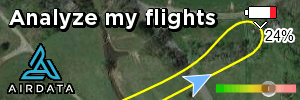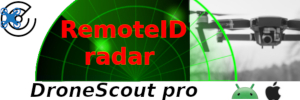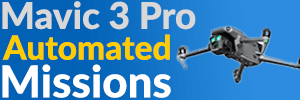I just flew about a dozen Dynamic Home Point operations and have a few observations and conclusions to share. And some questions. Comments, corrections, and additions are appreciated.
I used the RC 2 ( not the Pro) controller. In all cases, the drone was more than 75 yards from the home point. Any special behavior for cases where the drone is close to the home point (within 50 meters) wasn't tested. There were no landings between RTH operations except in one case for a battery change. The maximum elevation difference between the home points was less than about 15 feet.
Basic Operation
Observations and Quirks
Other than the basic operation conclusions, I doubt that any of the rest will ever matter much to most of us. But it's fun to tinker with.
I used the RC 2 ( not the Pro) controller. In all cases, the drone was more than 75 yards from the home point. Any special behavior for cases where the drone is close to the home point (within 50 meters) wasn't tested. There were no landings between RTH operations except in one case for a battery change. The maximum elevation difference between the home points was less than about 15 feet.
Basic Operation
- Dynamic Home Point altitude is governed by the Static RTH return altitude setting.
- If the drone is below that setting, it climbs vertically to reach it before proceeding.
- If the drone is above that setting, it remains at it's current altitude.
- The drone then flies at constant altitude until it's very near the home point.
- If the RTH return altitude is above the Static RTH altitude setting, the drone descends to the Static RTH altitude over the home point.
- The drone hovers at the home point and waits for input or, presumably lands when the battery state of charge reaches some critical level.
- The pilot takes over and lands the drone.
Observations and Quirks
- As noted in the manual, the home point symbols and control icon change color to blue.
- It appears that the accuracy of the home point location as set by the GPS in the controller isn't as good as the accuracy of the drone's GPS location. That may explain the "near the home point" language in the manual. It was still within 5 yards or so of the actual controller location.
- The return altitude was near constant (+/- one foot) until the drone neared the home point.
- If the return altitude was greater than the Static RTH altitude setting, the drone began descending before reaching the home point, (within 15 yards of so).
- After the drone has begun RTH return to the home point and before it enters hover mode, it will react to the controller location changing and proceed to the new home point.
- Once the drone enters hover mode, it does not respond to changes in the controller location.
- The drone leaves hover mode immediately after a control movement is made.
- Is the hover altitude adjusted for differences in the barometric altitude and sensor altitude, i.e. as might be caused by differences in terrain elevation?
- It appears that the hover altitude may be increased when the home point is near obstacles? Is that true? Are OA functions involved?
In some cases when the controller was within about within about ten yards of 30-80 foot tall trees, the drone would either climb to a higher altitude than the Static RTH altitude or descend to an altitude higher than it. Differences above the Static RTH altitude of about 20 were noted. - Or, is there another explanation for the increases in hover altitude?
- Are there any control logic changes when there is a substantial difference in the takeoff location and a home point set by Dynamic Home Point?
- What is the distance change in the controller location that triggers establishing a new home point?
- How does Dynamic Home Point alter the RTH control logic when RTH is initiated within 50 meters of the home point?
- Try to understand the hover altitude adjustments. Use Dynamic Home Point RTH in locations without trees or other obstacles that might trigger OA functions to adjust the hover altitude within 50 yards or so.
- Sort out the controller movement distance that triggers a new home point.
Last edited:










